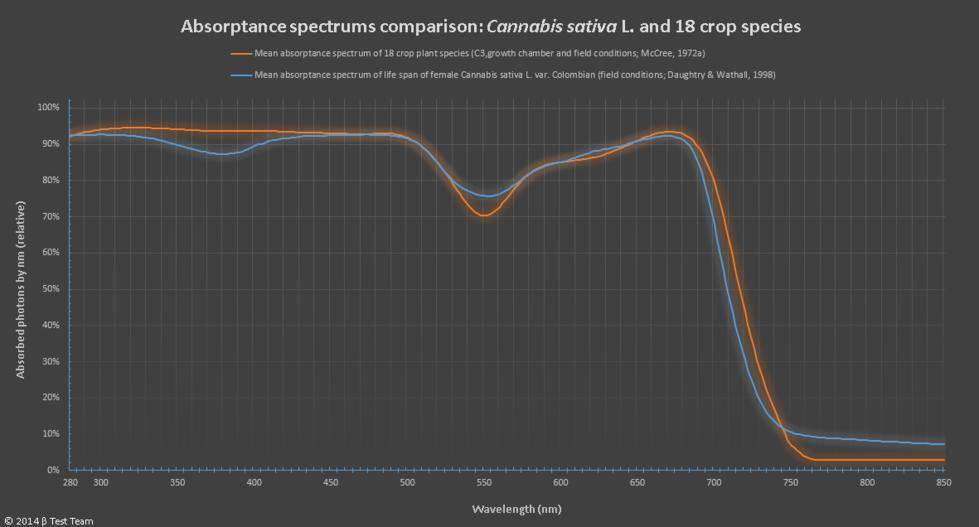Beta Test Team
Member
And here's the v3.0 of our absorptance for Cannabis vs. our cubic spline interpolation of McCree's absorptance for 18 C3 crop plant species.
Our cubic spline interpolation of McCree's data points (25 nm step size from 350 to 750 nm) ended at 758 nm. So I also extended the McCree absorptance by hand from 750 to 850 nm, and then used Gaussian smoothing for 750-775 to smooth out the curve.
This gives 3% absorptance for McCree's work from about 760 nm to 850 nm. We thought 3% is a good ballpark, as it could be anywhere between a likely ballpark of 1% to 8%. Without this McCree's absorptance shows 0% above about 758 and that's not what happens in real life.

Our cubic spline interpolation of McCree's data points (25 nm step size from 350 to 750 nm) ended at 758 nm. So I also extended the McCree absorptance by hand from 750 to 850 nm, and then used Gaussian smoothing for 750-775 to smooth out the curve.
This gives 3% absorptance for McCree's work from about 760 nm to 850 nm. We thought 3% is a good ballpark, as it could be anywhere between a likely ballpark of 1% to 8%. Without this McCree's absorptance shows 0% above about 758 and that's not what happens in real life.
Attachments
Last edited:




 I find light's effect on plants fascinating.
I find light's effect on plants fascinating.
